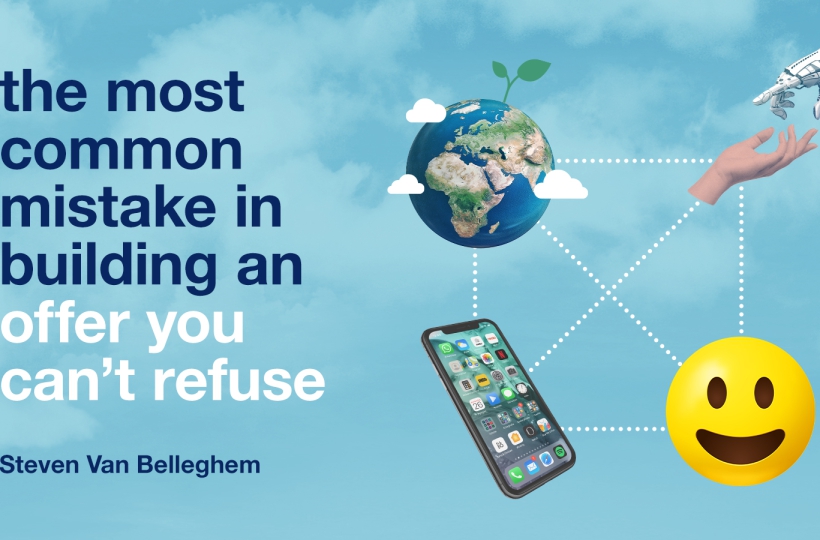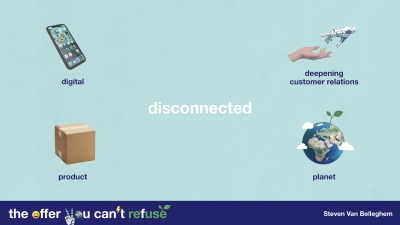The most common mistake in building an Offer You Can’t Refuse

How Decathlon is building an Offer You Can’t Refuse
I want to circle back a little bit to my Offer You Can’t Refuse concept, of which you can see a short refresher clip here:
These days, customers have come to really expect four layers of value:
- They obviously want a good product.
- They want digital convenience, which has already become a commodity.
- They want you to create positive change in their life and become what I call a Partner in Life.
- And they expect you to do well for society.
I see a lot of companies that are trying hard to work towards achieving that quadruple value proposition. And those that are able to bring it all together into one storyline and that are including their customers in each step of the process, are the ones that are truly developing an offer you can’t refuse.
For instance, we recently saw how Decathlon, the largest sporting goods retailer in the world with more than 1,690 stores in 60 countries and regions, has been deeply investing in a circular economy philosophy. And they have a very strategic approach to that, encouraging consumers to sell their unwanted or unused sportswear and sporting equipment back to the store, which will then repair and resell it second-hand (at a lower price, of course) and with a guarantee, allowing less fortunate consumers to buy quality sports equipment at a lower price. That way they have created an additional market for themselves, entering the second hand economy. Which is great for them and for their customers and for the planet.
I also really love how they launched the project, flipping their brand name on store fronts – reading ‘Nohltaced’ – in cities across Belgium in order to promote its “reverse selling” second hand service. And both the approach and the marketing really worked, as the store chain bought back 10,800 products from customers in 35 Decathlon shops after just one month.
But this is not just a one off “saving the world” initiative. Together with Zalando and other brands, it recently joined forces on the Reshoes program. The project aims to implement a new circular economy business model based on the collection and recycling of shoes in order to produce high-quality recycled shoes. And in May of this year, it introduced rental options for its Belgian customers, mainly targeting seasonal sports equipment which the retailer says often go unused. It totally makes sense, knowing that Belgians have on average more than €160 worth of unused sports equipment at home.
Overthinking all of these initiatives, I read in an article that “In addition to fitting into Decathlon’s circular economy strategy, the company hopes the initiative will make trying new sports accessible for more people.” That’s when it struck me that they have effectively transitioned from “selling sports goods” to “making sports accessible for more people”, combining a societal with an environmental function on top of a commercial one with a solid CX.
More than the 4 layers
But the most important question is probably this: “if you think about this for your own organization, how well are you performing here?” What are you doing right? What are you doing wrong? Where do you need to catch up?
I think that probably the biggest challenge for most companies is not just to invest in all four of these layers. In fact, many company leaders tell me proudly that “We’re working on product, we’re working on digital, we’re working on deepening customer relations and we’re doing things right for the planet and society.” And they conclude that they’re well on track, that they’re following the Offer You Can’t Refuse concept.
But when I ask some questions, and try to dig a little bit deeper, I often discover that all of these initiatives are completely disconnected. They have completely different people in the organization working on them. Often, they don’t even know about each other, let alone that a customer is aware of it. That just does not work.
If you want to have a real impact, and if you want to build a successful Offer You Can’t Refuse, you have to bring all of these 4 value threads together, involve your customers and connect all of this into one storyline. That is the moment when you will have impact on society, on the planet and when it will have an impact on your customer experience. If these ‘rules’ aren’t met, there is not really an Offer You Can’t Refuse.
